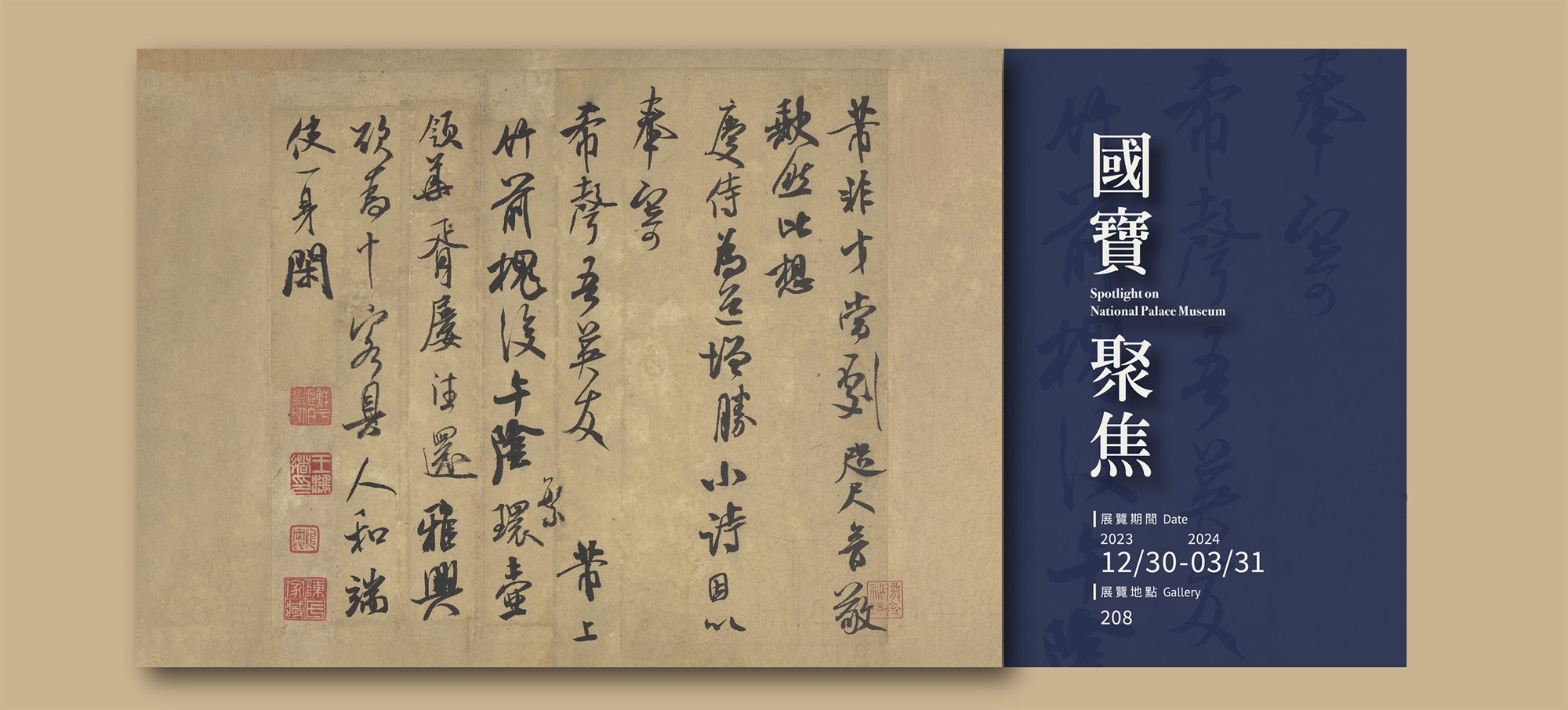Selections
The Calligrapher
Mi Fu (1051-1108) excelled at painting and calligraphy and was an expert connoisseur of the arts—he is listed as one of the four masters of Northern Song dynasty calligraphy. His calligraphic style has been called “gathering ancient ideograms,” a reference to Mi’s ability to master the calligraphic techniques and styles of various ancient luminaries and then freely put them into use himself.
The Contents
Early in the summer of 1092, Mi Fu once again received a government appointment and became the district magistrate of Yongqiu (Ji county in present-day Henan), which was to be the highest official rank he held in his lifetime. Research indicates that Mi may have written the piece on exhibit here as a letter addressed to Li Chun (1059-1109, style name Xisheng) sometime after assuming office. The first half of the letter consists of salutations, its general gist being: I’m not a person of great talent, and yet I’ve been foisted with heavy responsibility. Though I’m not far away from you, it’s impossible to visit to deliver these tidings in person. I recently recalled that you’re looking after both of your parents—and so I’m sending this little poem in lieu of a bit of cheerful conversation to help lift your spirits. The second half of the letter consists of the poem Mi Fu wrote, the meaning of which roughly means: The bamboo and locust trees surrounding me provide cool shadows in the afternoons, leading me to marvel that long-lost immortal realms like Huling and Huaxu have risen again with all their glory, and causing the urge to throw an elegant party for my scholarly friends to surge in my breast. How I yearn for that air of chummy bonhomie, which does so lend itself to relaxation and joy in both body and mind.
The Calligraphy
Format and Layout
Generally speaking, in terms of their content and format, nine factors are present in the most complete extant letters of correspondence from the Song dynasty, including formal salutations, names, the main body text, signatures, and so forth. However, polite formalities were dispensed with in letters of private correspondence. By way of example, the letter exhibited here includes only an introduction, the main body text, and an incomplete signature—and yet the letter in no way appears to be distant or unfriendly.
Additionally, when people in the Song dynasty wished to include poems into their handwritten letters, they usually placed the first brushstrokes in the poem higher than the main body text. This convention can be seen in numerous letters in the NPM’s collections, including “Li Zong’e’s Calligraphic Poem for Shilong, 李宗諤書送士龍詩” “Su Shi’s Second Rhyming Poem for Biancai,” “Su Shi’s Calligraphy of Three Poems in the Rhyme Scheme of the Department of Drafters Under the Developing Secretariat Poem,” as well as Mi Fu’s own “Calligraphy of a Poem for the Court Gentleman of the Supervisorate of Envoys” and “An Informal Letter Presented Respectfully to the Remonstrator.”
For this reason, it was thought that “Letter to with Poem in Regulated Verse with Seven Characters Per Line” would also have been written in the same format. However, when a mockup image was made attempting to restore this letter to its presumed original state, it was discovered that the three columns of text comprising Mi Fu’s poem were actually given a relatively dense layout with a more energetic appearance. This visual effect, which is distinct from the main body text’s uprightness and its more expansive layout, accords closely with this “little poem’s” uplifting spirit.
The Letter’s Circulation and Mounting
As we can see here, the first through fourth columns of text in this letter (reading from the right) are free of any signs of cutting, while the fifth through ninth columns bear the scars of being cut apart and joined back together—this shows us that the letter was previously remounted. By carefully scrutinizing these seams, we discover that the characters 領華 were previously located right beneath 壺, that 欲為十 were previously underneath 興, that 使一身閑 were below 端, and that there used to be an expanse of paper under the character 閑. If we view this letter’s first through fourth columns as indicative of its original appearance, and then refer to the layout commonly used to transcribe poetry in letters during the Song dynasty, then it becomes possible to attempt a reconstruction of the letter’s original state. In so doing, we find that this piece may well have originally have been approximately 27 cm wide and 32 cm tall, and that the “little poem,” entitled “Surrounded by Bamboo and Locust Trees,” was formerly written in just three lines. Another clue is that beneath the ideogram 閑, atop the uninscribed expanse where the two sections of paper are joined together, we see a seal imprint reading “Xianyu Shu, Bojifu.” This seal reveals that the letter was remounted no later than the era in which Xianyu Shu (1246-1302, style name Boji) lived. In fact, considering how in 1284 Xianyu personally remounted a different work of calligraphy in the NPM’s collection, “Draft of a Requiem for My Nephew by Yan Zhenqing of the Tang Dynasty,” he may well have been responsible for this letter’s remounting as well.


